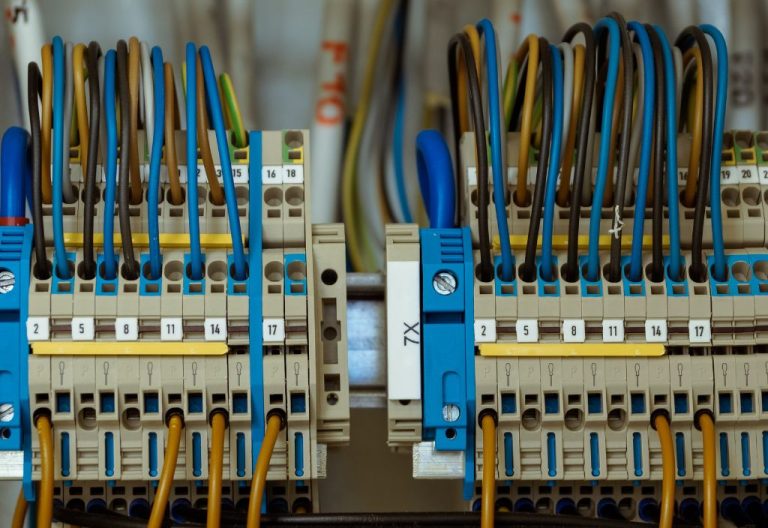Phones are key to successful communication, both for personal and business use. Over the years, phone lines have evolved from rudimentary to advanced systems that are more reliable and flexible. Understanding the differences between analog and digital phone lines will help you choose the best option for your needs.
Table of Contents
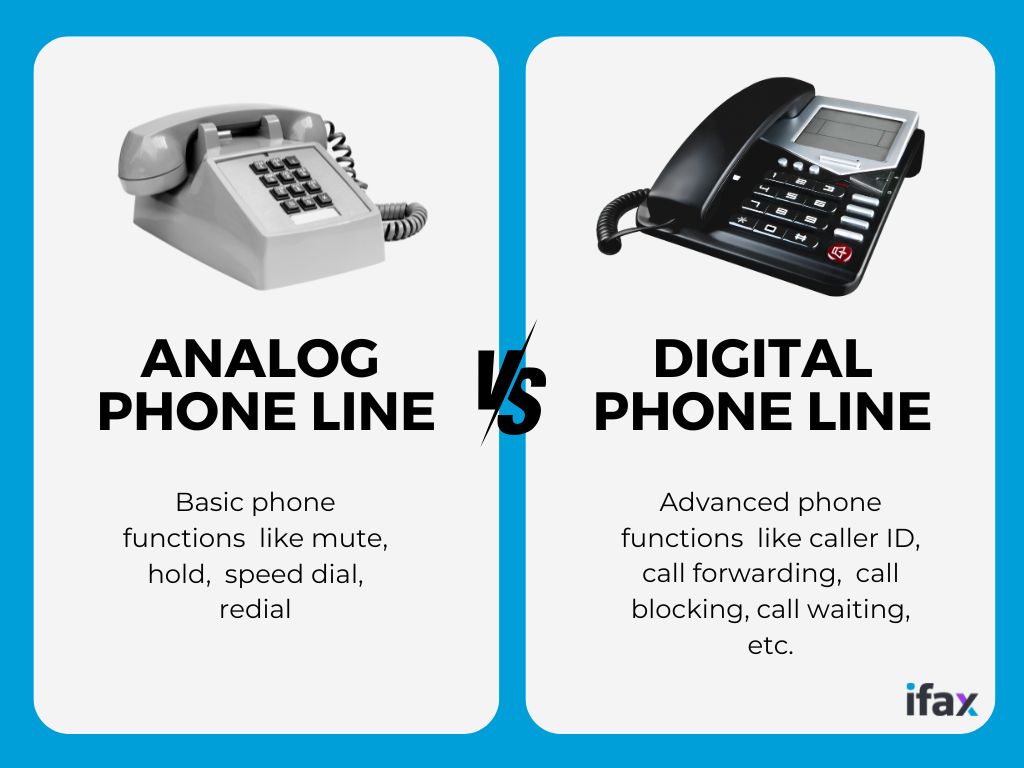
Key Differences Between Analog and Digital Phone Lines
Analog phones have been used for decades and formed the cornerstone of modern communication. They use traditional copper wires to transmit varying amplitude and frequency electronic signals to replicate sound waves, making an analog line a simple and effective way to communicate.
Digital phone lines are modern inventions that convert voice into binary data (0s and 1s) and transmit them over fiber optics or other advanced infrastructure.
Here are their key differences:
| Analog Phone Lines | Digital Phone Lines | |
| Signal Type | Electrical waves | Binary Data |
| Cabling | Copper telephone wires | Fiber optics or ethernet cables |
| Equipment | Traditional landline phones, fax machines, and modems with RJ11 connectors | Digital phones, computers, and network devices with RJ45 connectors |
| Functionality | Basic voice communication only | Includes advanced features like caller ID, call forwarding, video conferencing, voice-to-email, and more |
| Reliability | Highly reliable during power outages since they don’t depend on external power sources | Depends on internet connectivity and power, so backup systems are required to mitigate outages |
Read Further: POTS vs VoIP
Advantages of Analog Phone Lines
Even though they’re an older technology, analog phone lines remain popular for several reasons:
- They require minimal technical expertise to install and maintain since setup and operation are straightforward.
Because they don’t rely on external power sources, analog phone lines remain highly reliable during power outages.
- The initial costs of analog phones are lower and more suitable for simple landline systems with low-volume communication needs.
- There is already widespread copper wire infrastructure deployed in most areas that supports analog phone lines. However, you should note that most countries have a copper switch-off plan in place to replace traditional analog lines with fiber optic cables or wireless technology.
Is it still worth keeping an analog line?
While analog lines are being phased out, they still serve specific needs. Businesses in areas with limited internet access or those requiring emergency preparedness—such as alarm systems and elevator phones—may still find value in maintaining an analog line. Additionally, some industries, like healthcare and legal services, rely on traditional fax machines that work best over analog connections.
However, as telecom providers retire analog infrastructure, maintenance costs are rising, and service availability is shrinking. For businesses needing scalability, remote access, and software integration, an analog line is no longer enough. Digital solutions like VoIP or cloud-based faxing offer greater flexibility and long-term reliability.
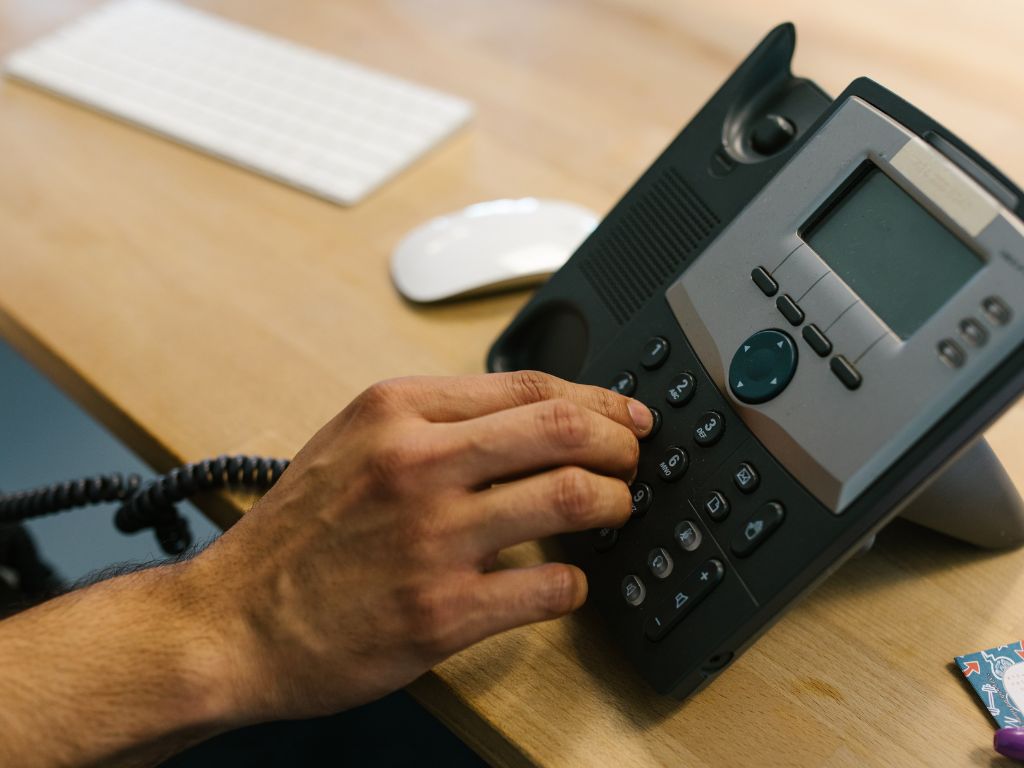
Advantages of Digital Phone Lines
In general, digital phone lines have more advantages than analog phone lines.
- You can experience clearer audio with minimal noise and distortion due to digital compression and error correction.
- Digital lines support modern features and integrate with other software like CRM, making them ideal for businesses.
- Adding virtual lines without significant infrastructure changes is easy, and you can enjoy multiple simultaneous calls over a single connection.
- Digital lines have lower long-term costs than analog phones due to reduced maintenance and operational expenses. However, equipment and infrastructure require higher initial setup costs.
- You can access digital phone lines via multiple devices such as computers, smartphones, or tablets. It also supports a cloud-based system, making it ideal for remote work setups.
Additional Reading: POTS Line Replacement
Practical Applications of Analog and Digital Phone Lines
Almost all new phone lines today are digital, with telecom companies retiring their copper wire infrastructure. However, landlines still use analog lines in rural areas where digital infrastructure isn’t available.
Small businesses, such as shops and restaurants, with low call volumes and minimal need for advanced features, may opt for analog phone lines. Industries that rely on traditional fax machines also use analog lines since many of the protocols used for traditional fax communication were built around analog characteristics.
Many businesses and buildings still rely on analog lines for alarm systems, elevators, and emergency phones—systems that must stay operational even during power outages.
Meanwhile, digital phone lines have widespread applications. Since they can support VoIP systems and video conferencing, they’re ideal for modern office environments. Call centers also rely on digital phone lines to manage high call volumes efficiently.
Digital lines also support remote and hybrid work, enabling telemedicine, virtual classrooms, online collaboration, and video lectures.
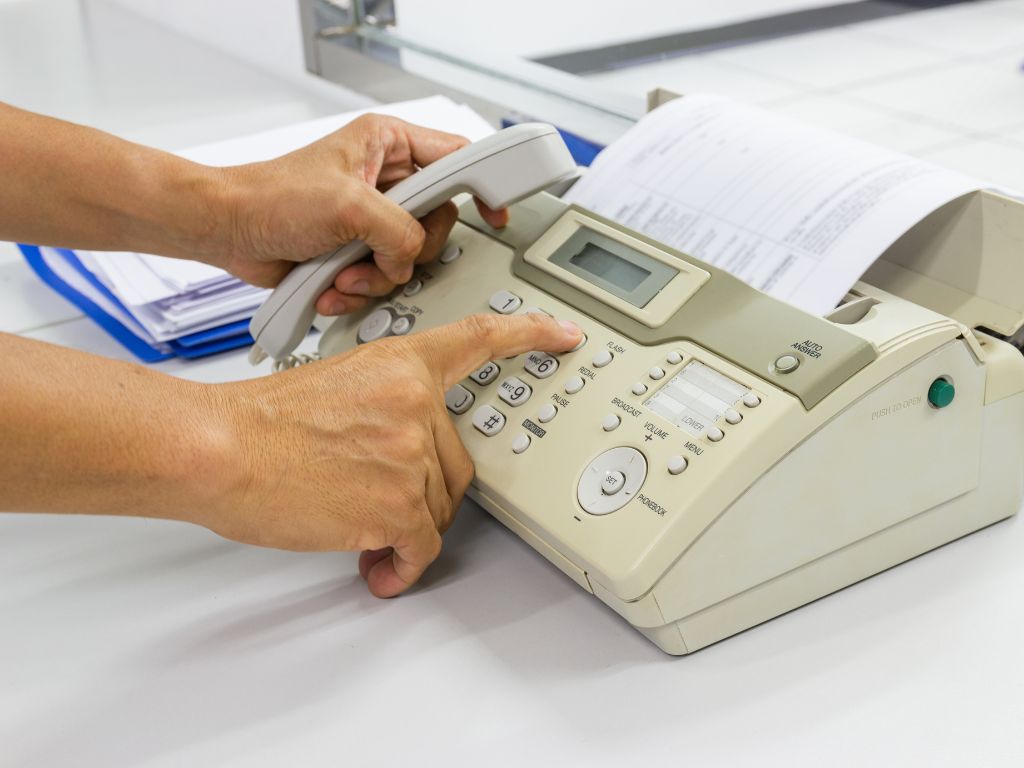
Analog vs Digital Phone Lines in Faxing
Traditional fax machines rely on analog lines to function. Analog fax transmits data as audio tones, which provide a direct, continuous connection with minimal interference.
However, analog faxing may soon become obsolete, with analog lines being phased out in many regions. Modern businesses also require advanced features, such as integration with cloud-based systems, that are impossible with analog fax.
Digital fax converts documents into digital files and transmits them via the Internet, offering a faster and better faxing experience than analog fax. Instead of a fax machine, you can send a fax straight from your computer or smartphone.
You can also use digital fax with a specialized FoIP-enabled fax machine, but it works best with VoIP, email, or cloud networks. If you want to keep using a traditional fax machine, you’ll need special adapters to connect it to a digital system.
Digital fax is easier to scale than analog fax since it requires minimal hardware investment. However, reliable faxing requires high-speed, stable internet and power connectivity.
Choosing the Right Phone Line for Your Needs
While other communication infrastructures exist, such as wireless technology, most modern communication still depends on phone lines.
Analog phone lines have been around for decades and are easier to set up. However, digital phone lines are the future. As telecom providers phase out analog lines, businesses that rely on them should start planning their transition now to avoid service disruptions.



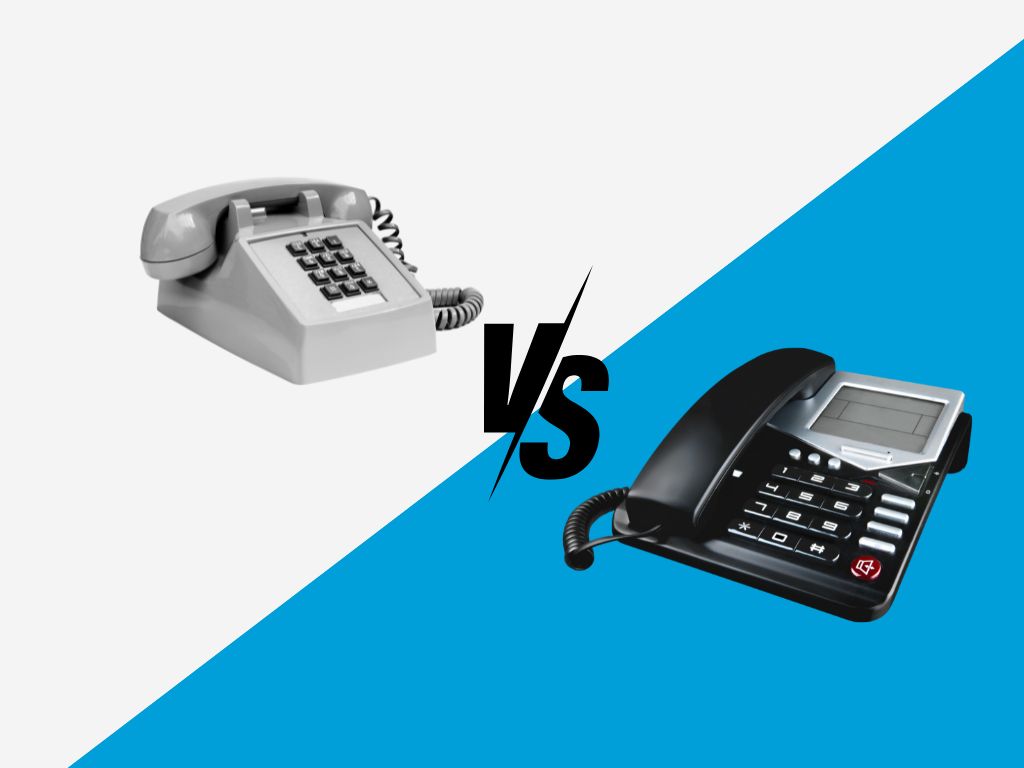
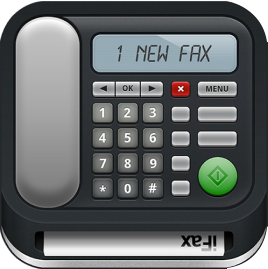
![What Is PSTN and How It Works: Complete Guide [2025] What Is PSTN and How It Works: Complete Guide [2025]](https://www.ifaxapp.com/wp-content/uploads/2025/01/what-is-pstn-768x528.png)
